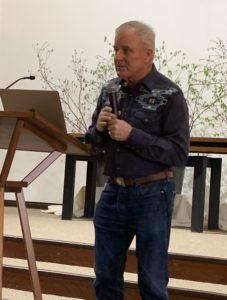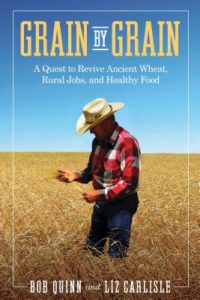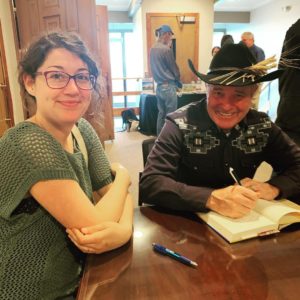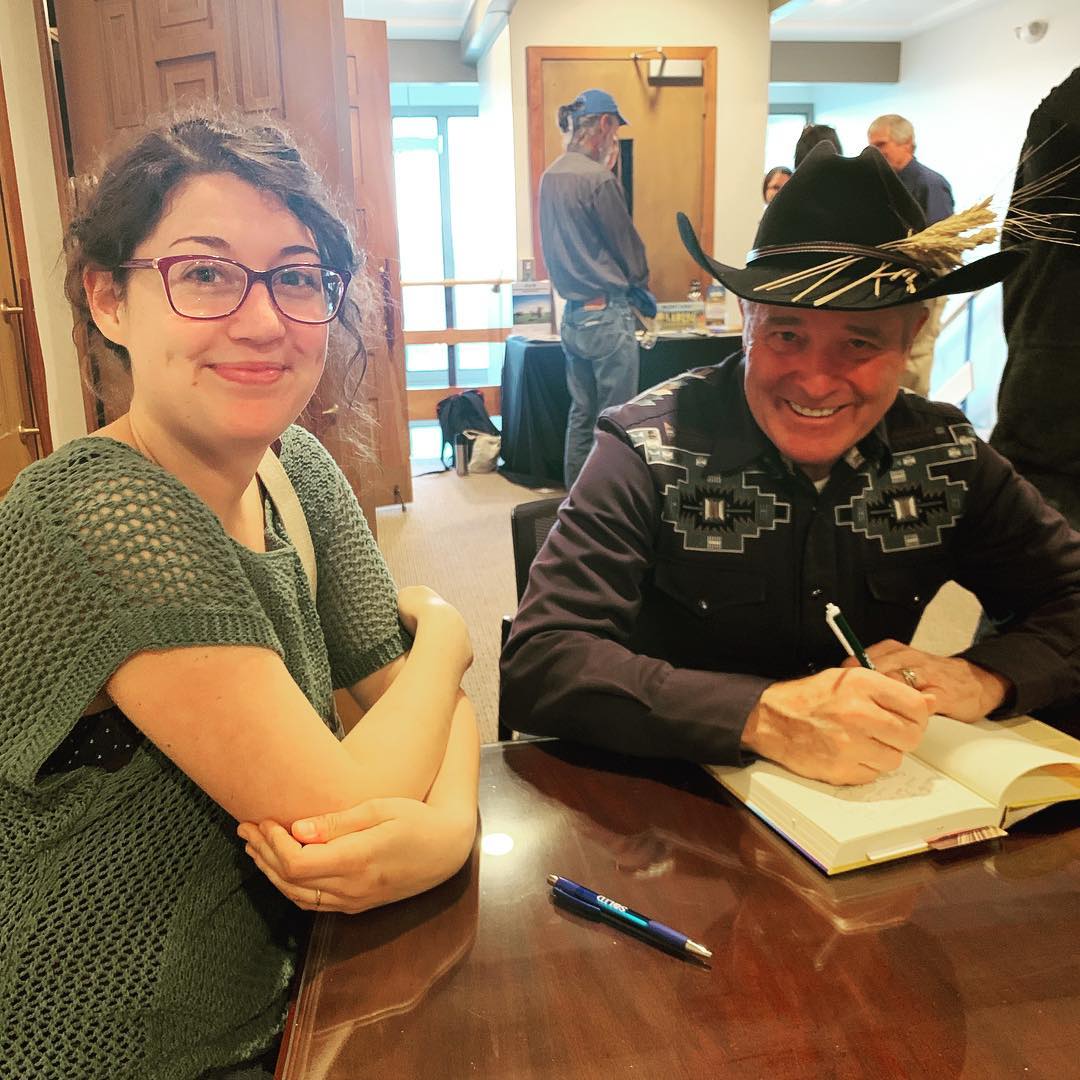 The sanctuary was full, pews were packed, and we were there to hear Bob Quinn talk about his journey from conventional wheat farmer in north central Montana to organic farmer and marketer of an ancient grain sold around the world.
The sanctuary was full, pews were packed, and we were there to hear Bob Quinn talk about his journey from conventional wheat farmer in north central Montana to organic farmer and marketer of an ancient grain sold around the world.
Like the traveling preacher of old, Bob took the podium and started talking. The more he talked, the faster he talked. It was exhilarating, educational, and… exhausting!
There are three key themes interwoven in this book: the discovery of a “giant” wheat and development of a market for a it, many ways a serial entrepreneur created new businesses and new job opportunities in rural Montana, and finally the realization that ancient wheat – unmodified by breeders of modern wheat – can be a healthful food, rather than one to be feared.
 As a young man growing up on his father’s and grandfather’s farm, Bob heard stories about a grain that may or may not have been found in King Tut’s tomb. Ultimately, he discovered a wheat three times the size of an average grain of modern wheat and that probably originated in the Fertile Crescent, which spanned modern-day Iraq, Israel, Palestinian Territories, Syria, Lebanon, Egypt, and Jordan, as well as the southeastern fringe of Turkey and the western fringes of Iran.
As a young man growing up on his father’s and grandfather’s farm, Bob heard stories about a grain that may or may not have been found in King Tut’s tomb. Ultimately, he discovered a wheat three times the size of an average grain of modern wheat and that probably originated in the Fertile Crescent, which spanned modern-day Iraq, Israel, Palestinian Territories, Syria, Lebanon, Egypt, and Jordan, as well as the southeastern fringe of Turkey and the western fringes of Iran.
As a student of botany and plant biochemistry, Bob ultimately turned his farming background from “chemical farming” to organic production methods and the global marketing of KAMUT® Brand Khorasan Wheat. In the process, he developed a market for about 100,000 acres of this ancient grain grown by 250 farming families in north central Montana, southern Alberta, and southern Saskatchewan. Of the millions of bushels of wheat harvested by those farmers, about 85% is exported to Europe, mostly to Italy.

The need to strengthen our regional food systems and our regional economic systems is critical in rural America, especially in a dry climate like that found in western and northern Montana.
Bob repeats over and over again that, “Farmers in our rural communities get paid to grow commodities for processing and export. We need to change that and start developing regional food systems in which farmers are encouraged to grow healthy food on healthy soils to feed their neighbors and local communities, and to embrace foods that are adapted to their unique place.”
I must confess to having to deal with a bout of cognitive dissonance when hearing this. Kamut International has done a great job to grow the market for an organic specialty wheat grown in rotation to improve soils and soil microbes and to provide stable grain prices for family farms in the northern Great Plains.
Unfortunately, what Bob has also done, is only to change the phrase above slightly: “Farmers in our rural communities get paid to grow organic grains (my emphasis) for processing and export.” Yes, the farmers growing for Kamut International have substituted specialty organics for conventional commodities, however they are no more encouraged to “grow healthy food on healthy soils to feed their neighbors and local communities, and to embrace foods that are adapted to their unique place” than their conventional commodity-farming brethren.
We especially need to find more ways to feed our neighbors and communities as we face the increasing challenges of climate change. One way to do that is to grow crops adapted to the landscape in which they are grown and not irrigated and fertilized to improve productivity. Natural selection has given us plants that are adapted to heat and drought, and to saline soils that can result from long term irrigation. Working with nature will continue to encourage new crop strains that can flourish in the future.
Growing crops for processing and export is mining our soil today as surely as the Copper Kings did 150 years ago. Leveraging his training and experience, we look to work with Bob, our organic farmers, Montana’s citizen scientists, and local and regional consumers of good healthful food to make his vision come true.
Get a copy of Grain by Grain: A Quest to Revive Ancient Wheat, Rural Jobs, and Healthy Food, by Bob Quinn and Liz Carlisle (Island Press, 2019), here.

